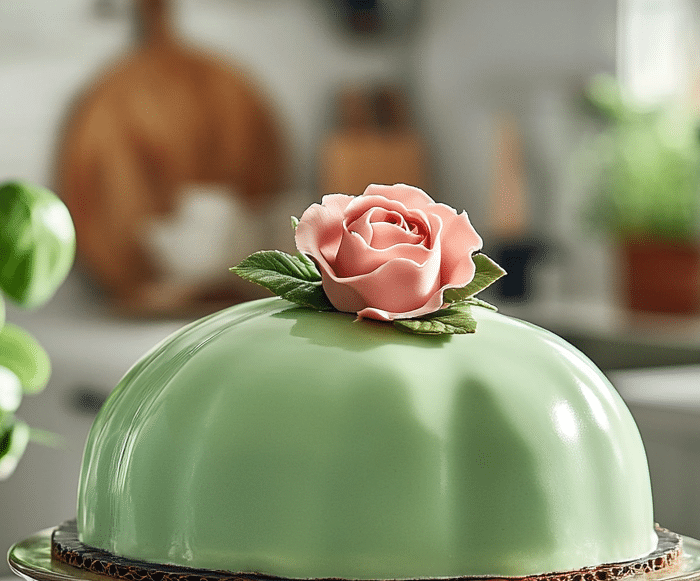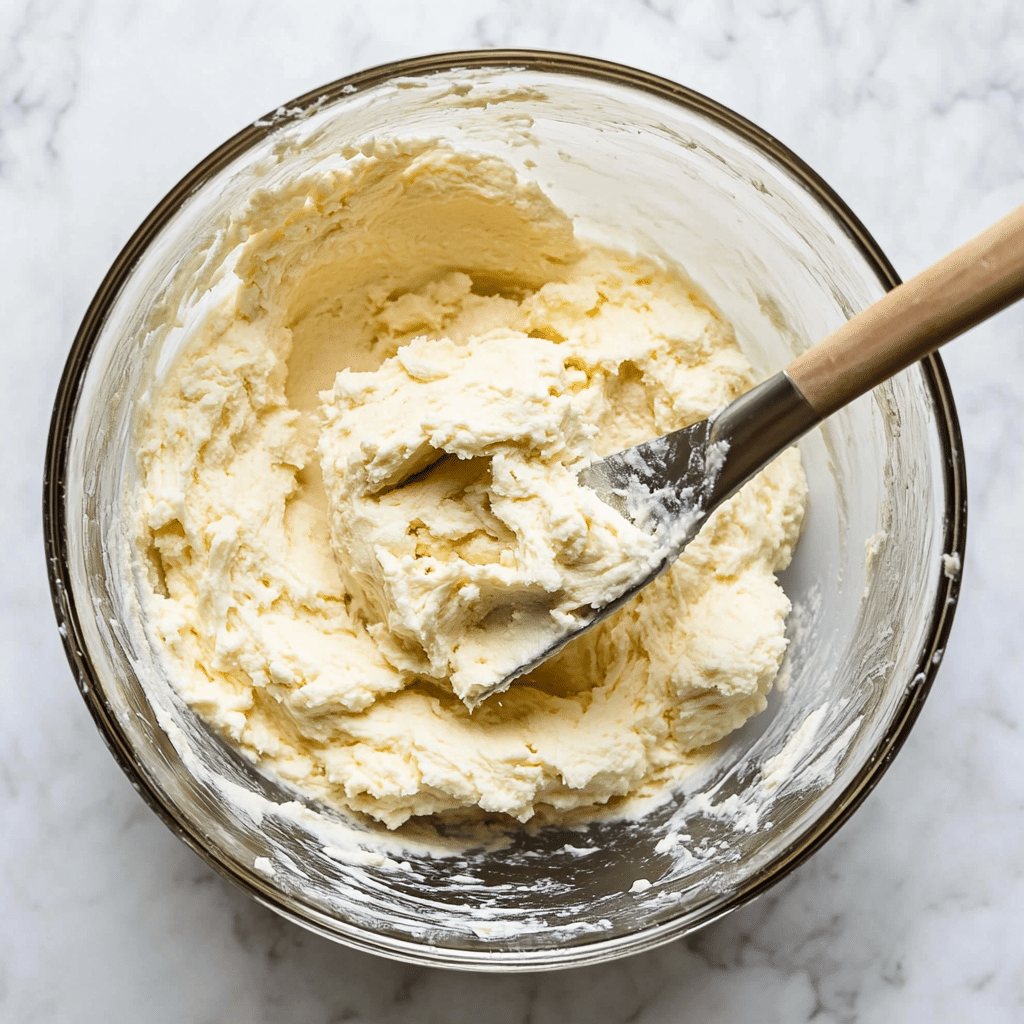If you’ve ever laid eyes on a green-dome dessert topped with a single marzipan rose, chances are you’ve met the enchanting princess cake. This classic Swedish treat—layered with sponge cake, raspberry jam, custard, whipped cream, and wrapped in sweet almond marzipan—looks like it stepped out of a royal tea party. But behind the elegance is a story rich in tradition and flavor. From its royal origins to its irresistible texture, princess cake invites bakers and dessert lovers alike into a world of celebration, finesse, and taste. In this guide, we’ll explore its history, ingredients, and what makes each bite unforgettable.
Print
Princess Cake: Elegant Swedish Dome for Indulgent Celebrations
Classic Swedish princess cake with layers of sponge, custard, jam, whipped cream, and marzipan dome.
Ingredients
3 sponge cake rounds
1 cup raspberry jam
2 cups vanilla custard
2 cups whipped cream
1 batch green marzipan
Optional marzipan rose
Instructions
1. Bake sponge cake rounds and let cool
2. Spread raspberry jam on bottom layer
3. Top with custard and whipped cream layer
4. Repeat layers and shape dome
5. Roll out marzipan, cover cake, trim excess
6. Decorate with marzipan rose
Notes
Chill cake before covering with marzipan for best results.
A Royal Seed in Grandma’s Kitchen – princess cake roots
It all began when I first tasted princess cake in a cozy corner of my grandmother’s Swedish-style kitchen. That soft dome of green marzipan, hiding layers of sponge, custard, and cream, sparked a memory of laughter-filled afternoons and stories of heritage. I still remember the moment I sank my fork into that delicate cake—sweet almond notes rising as light whipped cream melted on my tongue. That first bite, that warm glow of familiarity, is what makes princess cake so special.
Growing up, I thought the recipe was mine alone, passed down from one curious baker to another. Turns out, this elegance has deeper roots. The first princess cake recipe appeared in Jenny Åkerström’s 1948 cookbook for Swedish princesses—originally called gröntårta (green cake)—before evolving into the dreamy dome we know today . Åkerström, who taught Princess Margaretha, Märtha, and Astrid, crafted this masterpiece to reflect their refined tastes
What truly sets princess cake apart isn’t just its royal green shell: it’s the harmony of layers. Light sponge, creamy custard, tart jam, and luscious whipped cream combine under a smooth marzipan dome. That visual elegance—a simple marzipan rose atop the green blanket—captures hearts before the first bite . In Sweden, these treats grace birthdays, graduations, and Fika breaks; and now, American bakers are putting their own spin on it, from individual portions to pink renditions
Whether you’re assembling a mini version rooted in my grandmother’s memory or tackling a full 9-inch cake, you’ll step into a tradition that blends nostalgia, technique, and delight. In the next part, we’ll dive into exactly what goes into making this princess cake so unforgettable.
What’s Inside? Dissecting princess cake ingredients

Let’s unpack what makes a princess cake more than just its charming green exterior—it’s all about the layers.
First up, the base: three to four layers of light, airy sponge cake. Often baked as sheet-pan rounds or chiffon-style, the sponge is gently folded to retain air and sweetness what gives the cake that ethereal lift .
Between those sponges lies a smear of fruit typically raspberry jam to cut through the sweetness. Some bakers opt for apple butter or mixed berry compotes, but raspberry remains traditional
Next is vanilla custard or crème pâtissière as the luxurious middle layer. Classic recipes use egg yolks, milk, sugar, cornstarch, butter, and vanilla to build that silky profile. Many recipes then lighten that custard with whipped cream to create diplomat cream, perfect for stability and texture
Topping the diplomat cream is a generous dome of whipped cream, shaped to define the cake’s signature silhouette. This cushion not only tastes dreamy but helps the marzipan adhere neatly
Finally, the crowning feature: smooth marzipan tinted green (or occasionally pink/yellow). Made from ground almonds and sugar and sometimes almond extract or honey it gives a soft, nutty bite and that iconic curve
Here’s a summary:
| Component | Purpose & Notes |
|---|---|
| Sponge (3–4 layers) | Light, airy base; folded gently for fluffiness |
| Raspberry jam | Tart contrast to rich cream |
| Vanilla custard / diplomat cream | Silky and luxurious middle |
| Whipped cream | Supports marzipan; adds cloud-like softness |
| Marzipan dome | Almond-sugar shell; aesthetic and edible crust |
Why “Princess”? Uncovering the Name and History
The name princess cake might sound whimsical, but its origins are anything but fantasy. This elegant dessert traces its roots to early 20th-century Sweden, where a woman named Jenny Åkerström taught home economics to three royal sisters—Princess Margaretha, Princess Märtha, and Princess Astrid. In her 1948 cookbook Prinsessornas kokbok (“The Princesses’ Cookbook”), she shared a recipe called gröntårta, or “green cake.” The layers were so beloved by the young royals that the name evolved into prinsesstårta—literally, “princess cake.”
Åkerström’s version wasn’t just delicious; it was visually stunning and technically sophisticated. Her sponge layers were light yet resilient, able to support a dome of custard and whipped cream. Covered in almond-sweet marzipan and crowned with a pink marzipan rose, the cake quickly earned its place at Swedish birthdays, holidays, and cafés. The name princess cake stuck, not just because it honored nobility, but because it evoked grace, luxury, and celebration.
Fast forward to today, and the legacy of princess cake has gone global. In Stockholm, bakeries still serve the traditional green version, while across Europe and the US, home bakers are experimenting with colors, shapes, and flavor profiles. There are mini dome cakes for parties, vegan variations, and fillings like passion fruit custard or lingonberry jam. The marzipan might be pink or yellow, but the heart of the dessert stays true to Åkerström’s vision.
In Sweden, fika culture embraces the princess cake as a cozy companion to coffee or rosehip tea. It’s not just a dessert—it’s a ritual. You’ll find it at every celebration that calls for a touch of class. Pastry chefs often treat it like a canvas, reimagining the layers with creative flair: pistachio marzipan, dark chocolate custard, or even elderflower syrup in the whipped cream. Despite the spins, the structure—sponge, jam, custard, cream, marzipan—remains sacred.
So, why is it called princess cake? Because it’s a dessert born in royal kitchens, perfected by tradition, and shared by generations of bakers. It’s an invitation to turn simple ingredients into something extraordinary—fit for royalty, yet made by hand. In the next section, we’ll explore exactly how it tastes, and why every layer matters.
Tasting the Experience – what princess cake flavor tastes like
When you slice into a princess cake, you’re greeted by a rich blend of flavors—softly sweet, subtly nutty, bright, and creamy. The marzipan dome hits first with a mellow almond sweetness that sets the tone. It’s followed by a wave of cool whipped cream and custard, infused with vanilla and just enough richness to feel indulgent without being overwhelming.
A thin layer of raspberry jam adds a tart burst that cuts through the creaminess, refreshing the palate with every bite. It’s that contrast—fruity tang against vanilla cream—that keeps you reaching for another forkful. The sponge cake layers underneath are soft and lightly sweet, absorbing flavors while adding just enough structure to hold the whole dome together.
The flavor profile is all about balance. Marzipan brings the sweetness and unique character. The custard, lightened with whipped cream, gives it that smooth, elegant texture. Raspberry jam livens it up, and the sponge supports it all with subtle sweetness and airiness.
Whether you’re a fan of traditional flavors or eager to create your own spin, princess cake always delivers a refined, comforting experience that’s as satisfying to look at as it is to eat.
for more recipes follow our facebook page
Conclusion
Baking a princess cake connects you to a royal Swedish tradition steeped in flavor, texture, and memories. From that first nostalgic bite—marzipan, custard, fruit, sponge—to the modern twists you might add, this dessert tells a story on the plate and the palate. Whether you’re honoring heritage or creating your own, princess cake encourages curiosity, technique, and heartfelt moments. Pull up a chair—every slice is an invitation to share, savor, and shine.
FAQS
What is princess cake made of?
Princess cake is built with layers of light sponge cake, raspberry or berry jam, vanilla custard (often combined into a diplomat cream), fluffy whipped cream, and finished with a smooth almond‑sweet marzipan dome.
Why is it called a princess cake?
It earned its royal name from its Swedish origins—home economist Jenny Åkerström created the cake for Princess Margaretha, Märtha, and Astrid in the early 20th century. The Swedish name Prinsesstårta literally means “princess cake.”
What country is Princess Cake from?
Princess cake originates from Sweden, where it became a beloved tradition for birthdays, graduations, and fika gatherings.
What does princess cake flavor taste like?
The taste is a refined blend: almond‑sweet marzipan, silky vanilla custard, airy whipped cream, tart berry jam, and soft sponge harmonize into a balanced, elegant dessert.
